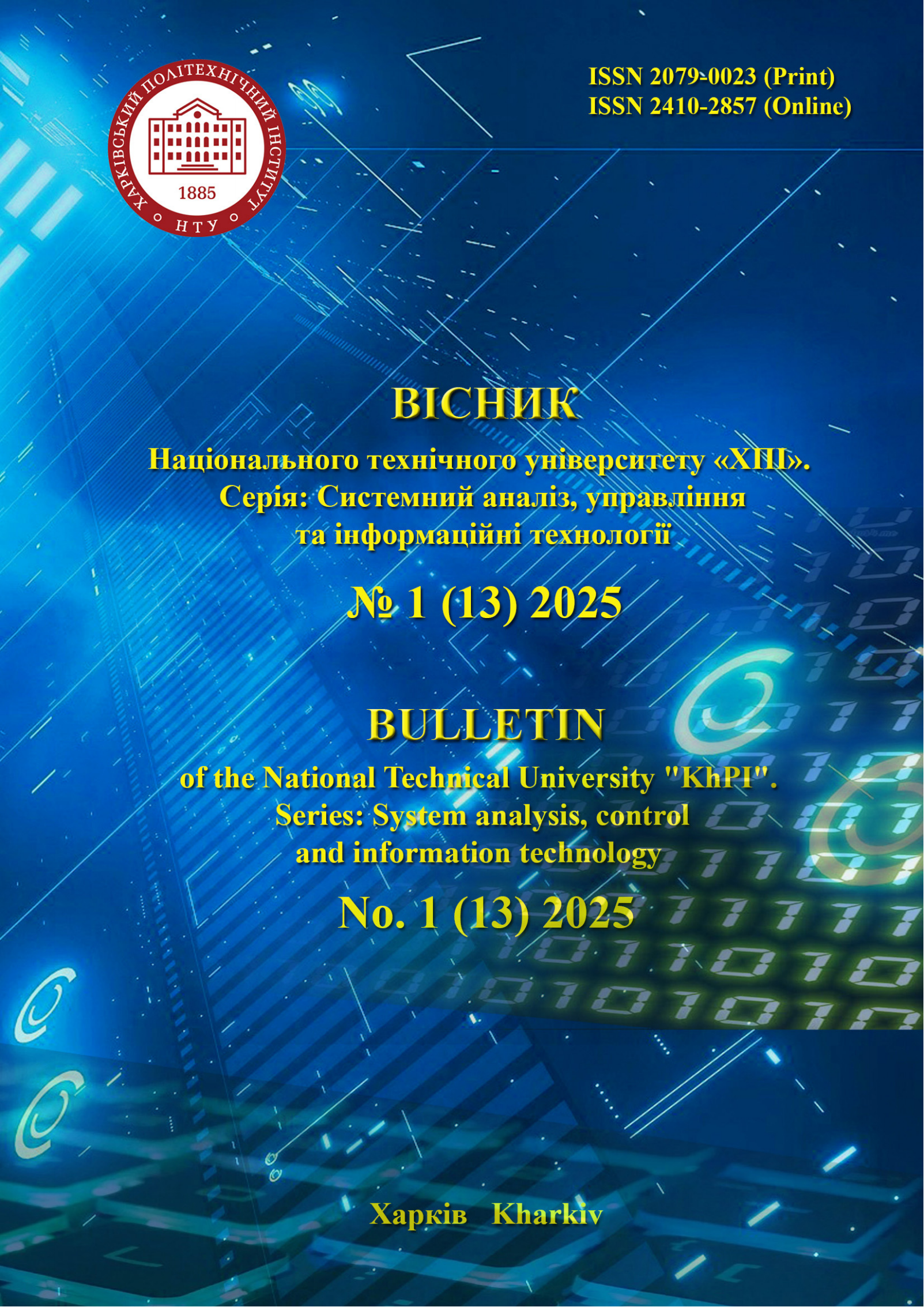DESIGNING THE ARCHITECTURE AND SOFTWARE COMPONENTS OF THE DOCKERISED BLOCKCHAIN MEDIATOR
DOI:
https://doi.org/10.20998/2079-0023.2025.01.15Keywords:
dockerized blockchain architecture, supply chain management, containerized blockchain nodes, small-medium enterprises, supply chain, cryptography, hashing, hashing algorithms, ethereumAbstract
Small and medium enterprises are not adopting blockchain solutions in their supply chains and business processes due to the cost of implementing and deploying the solutions. The architecture, which is described, is aimed at lowering the barrier for smaller-scale businesses to adopt distributed technologies in their supply chains. Docker’s containerization capabilities are leveraged to achieve these goals due to improved horizontal scaling and providing a unified environment for the application deployment. This architecture leverages tools provided by the Docker to design scalable and robust system that is easily maintainable. Some of the key challenges are addressed by the proposed architecture, such as high development costs, incompatibility with existing systems, and complicated setup processes, which are required for every participant in the supply chain. This research describes how utilizing Docker system capabilities can help enable smaller-scale businesses to adapt distributed solutions in their supply chains and cooperation with other companies by tackling the issues of traceability, transparency, and trust. The main components of the architecture are a mediator server containerized within a Docker network, a blockchain node, and an NGINX proxy server container. They are implemented to process request data, store relevant information, and secure it on the Ethereum blockchain ledger. The proposed architecture is also aimed at integrating smoothly with existing company applications to reduce adoption costs. Security of the data in the Ethereum ledger is achieved via security measures such as cryptography mechanisms and hashing already integrated into the Ethereum platform.
References
Shubham Joshi, Anil Audumbar Pise, Manish Shrivastava, C. Revathy, Harish Kumar, Omar Alsetoohy, Reynah Akwafo. Adoption of blockchain technology for privacy and security in the context of industry 4.0. Wireless Communications and Mobile Computing. 2022. issue Explorations in Pattern Recognition and Computer Vision for Industry 4.0. article 4079781. DOI: https://doi.org/10.1155/2022/4079781.
Shmatko O. V., Kolomiitsev O. V., Zherzherunov P. Y., Tretiak V. F., Sinchuk A. V. Survey and categorization of blockchain solutions for supply chain management. Systemy obrobky informatsii [Information processing systems] 2024 no. 3 (178), pp. 84-92. DOI: https://doi.org/10.30748/soi.2024.178.10.
Jangla Kinnary. Accelerating Development Velocity Using Docker: Docker Across Microservices. Berkeley: Apress, 2018. pp. 27-53. Available at: https://link.springer.com/book/10.1007/978-1-4842-3936-0 (accessed: 15.04.2025).
Miell I., Sayers A. Docker in practice. New York City: Simon and Schuster, 2019. 384 p. Available at: https://www.simonandschuster.com/books/Docker-in-Practice-Second-Edition/Ian-Miell/9781617294808 (accessed: 15.04.2025).
dockerd. URL: docs.docker.com/reference/cli/dockerd/ (accessed 10.04.2025).
NGINX Ingress Controller. Available at: https://hub.docker.com/r/nginx/nginx-ingress (accessed: 15.04.2025).
ethereum/client-go. URL: https://hub.docker.com/r/ethereum/client-go (accessed: 15.04.2025).
What Is a Sequence Diagram. Available at: www.visual-paradigm.com/guide/uml-unified-modeling-language/what-is-sequence-diagram/ (accessed: 18.04.2025).
Fielding R., Gettys J., Mogul J., Frystyk H., Masinter L., Leach P., Berners-Lee T. RFC 2616: Hypertext Transfer Protocol -- HTTP/1.1. United States: RFC Editor, 1999. DOI: https://doi.org/10.17487/RFC2616.
Pollard B. HTTP/2 in Action. New York City: Simon and Schuster, 2019. 416 p. Available at: https://www.simonandschuster.com/books/HTTP-2-in-Action/Barry-Pollard/9781617295164 (accessed: 18.04.2025)
Andreas M., Gavin W. Mastering Ethereum. Sebastopol: O’Reilly Media, 2019. 415 p.
Danen C. Introducing Ethereum and solidity. Berkeley: Apress, 2017. Vol. 1. 185 p.
Downloads
Published
How to Cite
Issue
Section
License

This work is licensed under a Creative Commons Attribution 4.0 International License.
Authors who publish with this journal agree to the following terms:
- Authors retain copyright and grant the journal right of first publication with the work simultaneously licensed under a Creative Commons Attribution License that allows others to share the work with an acknowledgement of the work's authorship and initial publication in this journal.
- Authors are able to enter into separate, additional contractual arrangements for the non-exclusive distribution of the journal's published version of the work (e.g., post it to an institutional repository or publish it in a book), with an acknowledgement of its initial publication in this journal.
- Authors are permitted and encouraged to post their work online (e.g., in institutional repositories or on their website) prior to and during the submission process, as it can lead to productive exchanges, as well as earlier and greater citation of published work (See The Effect of Open Access).


